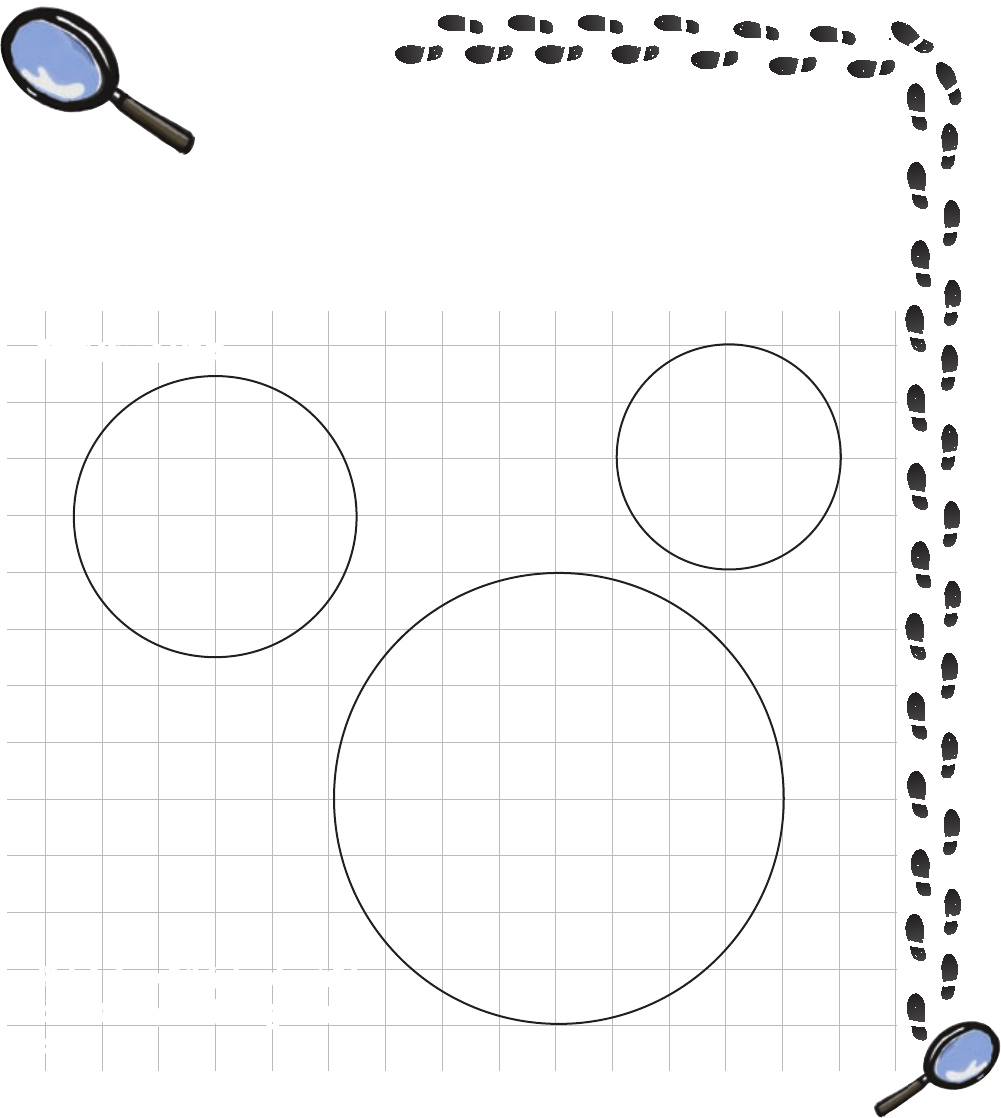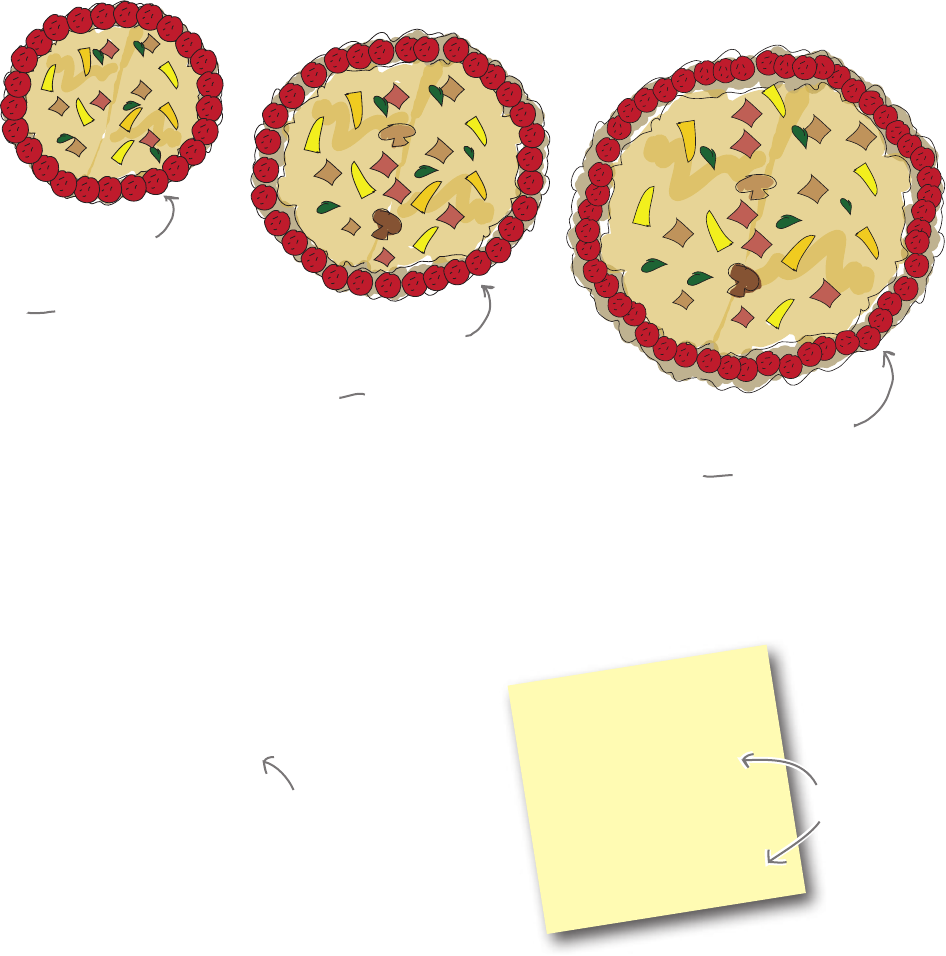
Pi
25 p
i
eces of p
epp
eroni
32 p
i
ec
es of p
epp
eroni
50 p
i
relationship between circumference and diameter
The pepperoni perimeter is 3 (and a bit)
times diameter
There’s a pattern: no matter what size the pizza, the pepperoni
perimeter is a little more than three times the diameter.
8"
10"
ec
es of p
epp
eroni
16"
25 = 3.123
8
32 = 3.2
10
50 = 3.125
16
A circle’s circumference is diameter x Pi
In geometry terms, a circle’s perimeter is called the circumference,
and no matter how big or small that circle is, you can find the
circumference by multiplying the diameter by the same number.
Roughly it’s just barely over three, and we call this number Pi. Pi is
T
he circumf
er
ence of a
circle is given by:
Circumf
er
enc
e =
π
D
or
Circumf
er
enc
e = 2
π
r
T
hese ar
e equa
l
because D = 2r.
usually written using this symbol:
π
214 Chapter 5

Y
ou can probabl
y find a Pi
button on your ca
lcul
a
t
or. It
might give y
ou 3.14159, or it
might give y
ou something wi
th
ev
en mor
e decimal pl
ac
es.
No ca
lcul
a
t
or?
Subs
ti
tute the
frac
tion 22/7
f
or a close
approxima
tion
t
o Pi.
circles
Ha ha…very funny. Not.
The chapter is about pizza
and now you’re throwing in
a made-up number called
"Pie"....
“Pi” is actually a letter from
the Greek alphabet.
It’s used to stand in for the number
that you always get when you divide a
circle’s circumference by its diameter.
Why do you think “math people” find Pi, or π, more useful
than 3.1415926535897932384626433832795…?
you are here 4 215

pi is a ratio
Q:
When you showed the formula for circumference, you
put πD but also 2πr—does it matter which I use?
A:D is diameter, and r is radius, so the two formulas always
give the same answer since D = 2r. It doesn’t matter which you
use—it just depends on whether you’ve got the diameter or the
radius available.
Q:
So, in like two pages you’ve shown Pi as “just barely
over three,” 3.14159, a way-long decimal, and even 22/7…
which is it?
A:Pi is what is known as an irrational number. That means
that even if you used a billion decimal places you couldn’t write it
down completely. Depending on what you’re using Pi for you might
need to use a more or less precise version of it. On an exam, you’ll
usually be told what to use, otherwise just take whatever your
calculator gives you when you press the π button, and remember to
round your answer to fit with the question.
OK, so Pi is really nothing more than
a placeholder for the ratio between
a circle’s circumference and its
diameter? I guess it’s quicker than
writing or saying 3.14159265358979
32384626433832795…?
Exactly.
Math geeks talk about Pi as if it’s kind of magic—and
it’s certainly pretty useful because it works for every
circle, every time—but really Pi is just a quick way of
saying “that big long number that you get when you
divide circumference by diameter.”
216 Chapter 5
Get Head First 2D Geometry now with the O’Reilly learning platform.
O’Reilly members experience books, live events, courses curated by job role, and more from O’Reilly and nearly 200 top publishers.

